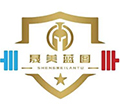聯係方式(shì)
CONTACT INFO
聯係人(rén):張先生
地址:常州(zhōu)市金(jīn)壇區金城鎮白塔金宜路6號
NBR/PVC泡棉是什麽材料?(What is NBR/PVC foam material?)
NBR是橡膠,PVC是聚氯乙烯..NBR+PVC就屬(shǔ)於橡塑共混改(gǎi)性..其實(shí)NBR在裏麵的作用主要起增韌,回彈(dàn)和恢複性..根據NBR的比例不同(tóng),軟硬度也會有區分,一般我(wǒ)們都屬稱為橡塑彈性體.主要用在密封條或密封件上麵使用。
橡膠補強(qiáng)性能影響主(zhǔ)要真對拉伸強度和撕裂強度上,其(qí)一般規律是(shì):當粒徑相同時,高結(jié)構炭黑對非結晶橡(xiàng)膠的補(bǔ)強作用大(dà),一般有較高的拉伸強度和撕裂強(qiáng)度。橡膠結(jié)構性還是影響(xiǎng)導電性能的最重要因(yīn)素(sù),鏈枝狀結構易於在橡膠中形成交織聯結的導電通路,會(huì)使導(dǎo)電性能提高。
線型結(jié)構:未硫化橡膠的普遍結構。由於分子量很大,無外力作用下,大分子鏈呈無規(guī)卷曲線團狀。當外力作用,撤除(chú)外(wài)力,線團的糾纏度(dù)發生變化(huà),分子鏈發生反(fǎn)彈,產生強烈的複原傾向,這便是橡膠高彈性的由來。
支鏈結構(gòu):橡膠大分子鏈(liàn)的支鏈的聚集(jí),形成凝膠。凝膠對橡膠的性能和加(jiā)工都不利。在煉膠時,各種(zhǒng)配合劑往往進不了凝膠區,形成局(jú)部(bù)空白,形成不了補強和(hé)交聯,成為產品的薄弱部位。
交聯結構:線型分子(zǐ)通過一(yī)些原子或原子團的架橋而彼此連接起來,形成三維網狀結構。隨著硫化曆程的進行,這種結構不斷加強。這樣,鏈段的自由活動能力下降,可(kě)塑性和伸長率(lǜ)下降,強度,彈(dàn)性(xìng)和硬度上升,壓(yā)縮永久(jiǔ)變形和(hé)溶脹度下降。
NBR is rubber, PVC is PVC: NBR+PVC belongs to the rubber and plastic blending modification: In fact, the role of NBR in it is mainly to strengthen toughness, rebound and recovery.According to the proportion of NBR, soft and hardness will also be differentiated, generally we are called rubber and plastic elastomers. It is mainly used on sealing strips or seals.
The general law of rubber reinforcing properties mainly affects the tensile strength and tear strength: when the particle size is the same, the reinforcing effect of high-structure carbon black on amorphous rubber is large, and generally has high tensile strength and tear strength.Rubber structure is also the most important factor affecting conductivity, and the chain dendritic structure is easy to form intertwined conductive paths in rubber, which will improve conductivity.
Linear structure: a common structure of unvulcanized rubber.Due to the large molecular weight, under the action of no external force, the macromolecular chain is in the shape of a random curve. When the external force acts, the external force is withdrawn, the entanglement degree of the wire mass changes, and the molecular chain rebounds, resulting in a strong tendency to recover, which is the origin of the high elasticity of rubber.
Branched chain structure: aggregation of branched chains of rubber macromolecular chains to form a gel. The gel is detrimental to both the properties and processing of the rubber.In the process of rubber refining, various compounding agents often cannot enter the gel area, form a local blank, form no reinforcement and cross-linking, and become the weak part of the product.
Cross-linked structure: linear molecules are connected to each other by the bridging of some atoms or atomic groups to form a three-dimensional network structure.This structure is continuously strengthened as the vulcanization process progresses. In this way, the free mobility of the chain segment decreases, plasticity and elongation decrease, strength, elasticity and hardness increase, compression set and swelling decrease.

